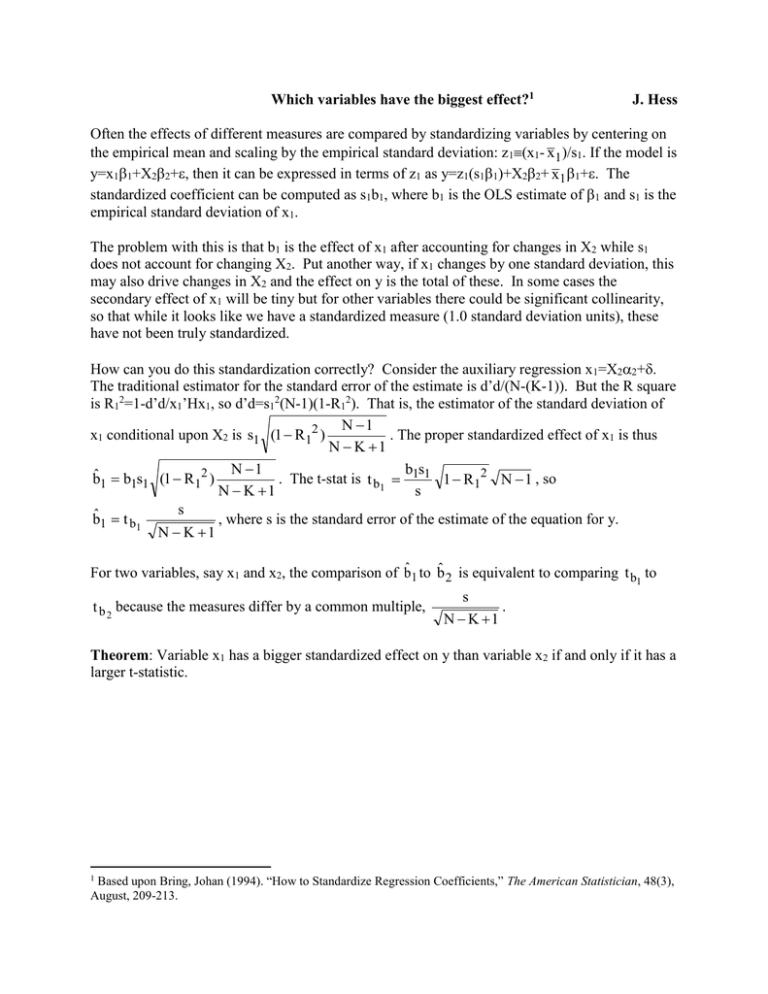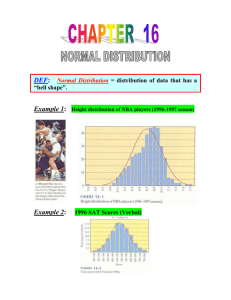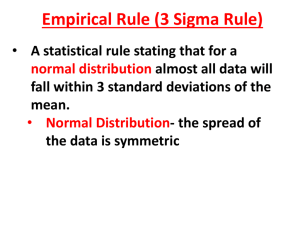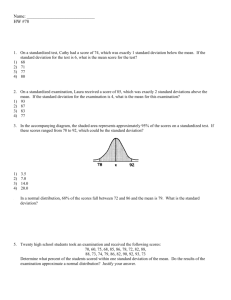Which variables have the biggest effect
advertisement

Which variables have the biggest effect?1 J. Hess Often the effects of different measures are compared by standardizing variables by centering on the empirical mean and scaling by the empirical standard deviation: z1(x1- x 1 )/s1. If the model is y=x11+X22+, then it can be expressed in terms of z1 as y=z1(s11)+X22+ x 1 1+. The standardized coefficient can be computed as s1b1, where b1 is the OLS estimate of 1 and s1 is the empirical standard deviation of x1. The problem with this is that b1 is the effect of x1 after accounting for changes in X2 while s1 does not account for changing X2. Put another way, if x1 changes by one standard deviation, this may also drive changes in X2 and the effect on y is the total of these. In some cases the secondary effect of x1 will be tiny but for other variables there could be significant collinearity, so that while it looks like we have a standardized measure (1.0 standard deviation units), these have not been truly standardized. How can you do this standardization correctly? Consider the auxiliary regression x1=X22+. The traditional estimator for the standard error of the estimate is d’d/(N-(K-1)). But the R square is R12=1-d’d/x1’Hx1, so d’d=s12(N-1)(1-R12). That is, the estimator of the standard deviation of N 1 x1 conditional upon X2 is s1 (1 R12 ) . The proper standardized effect of x1 is thus N K 1 bs N 1 . The t-stat is t b1 1 1 1 R12 N 1 , so b̂1 b1s1 (1 R12 ) N K 1 s s , where s is the standard error of the estimate of the equation for y. b̂1 t b1 N K 1 For two variables, say x1 and x2, the comparison of b̂1 to b̂ 2 is equivalent to comparing t b1 to t b 2 because the measures differ by a common multiple, s . N K 1 Theorem: Variable x1 has a bigger standardized effect on y than variable x2 if and only if it has a larger t-statistic. Based upon Bring, Johan (1994). “How to Standardize Regression Coefficients,” The American Statistician, 48(3), August, 209-213. 1




